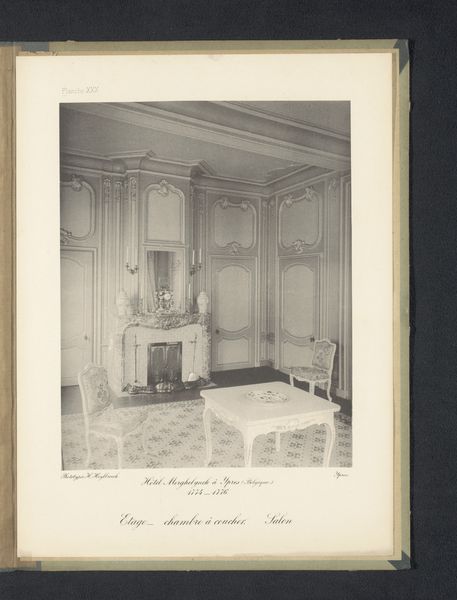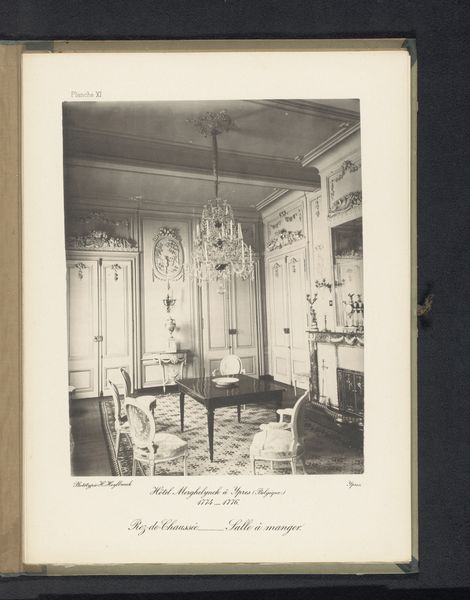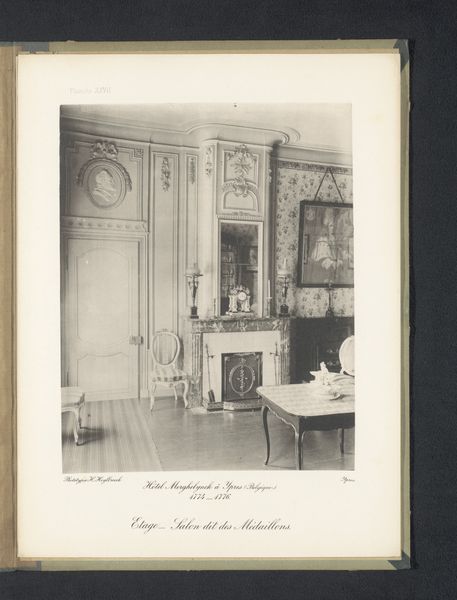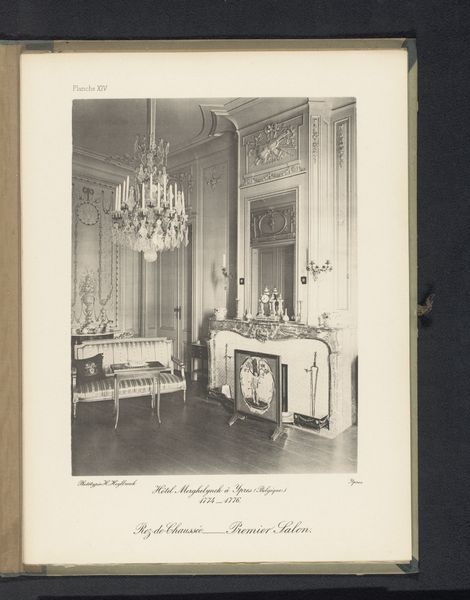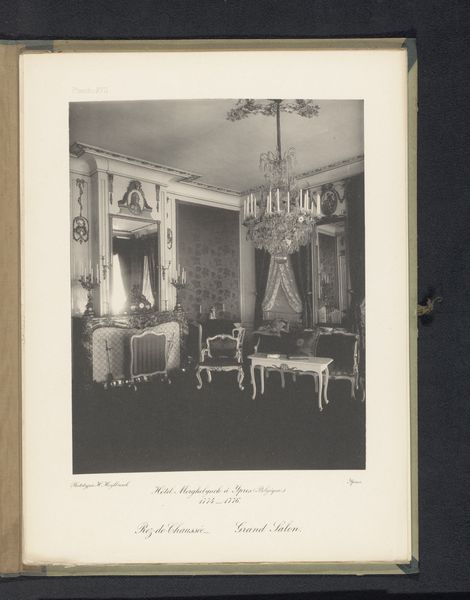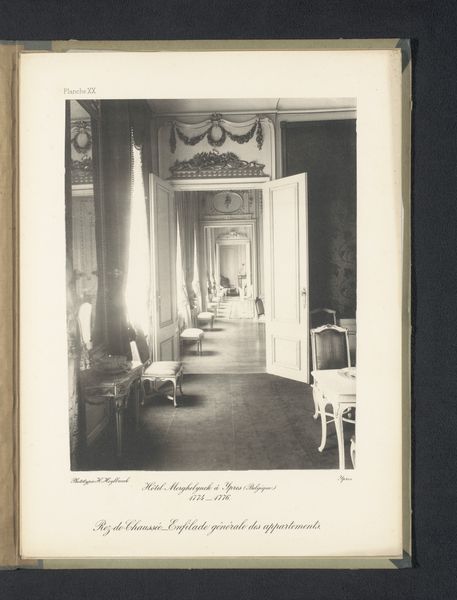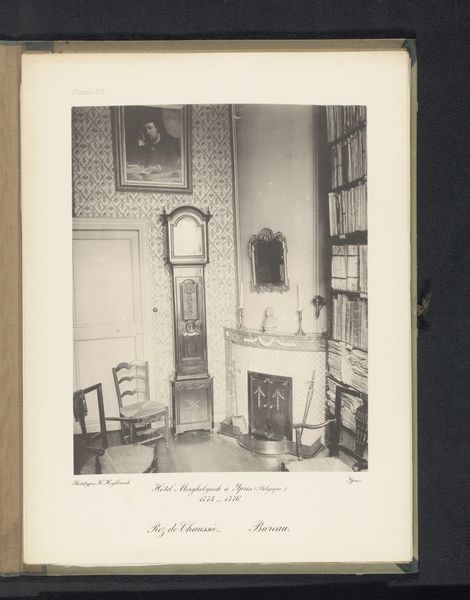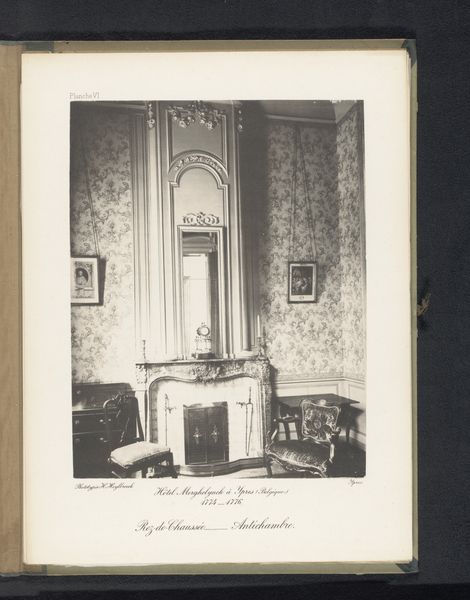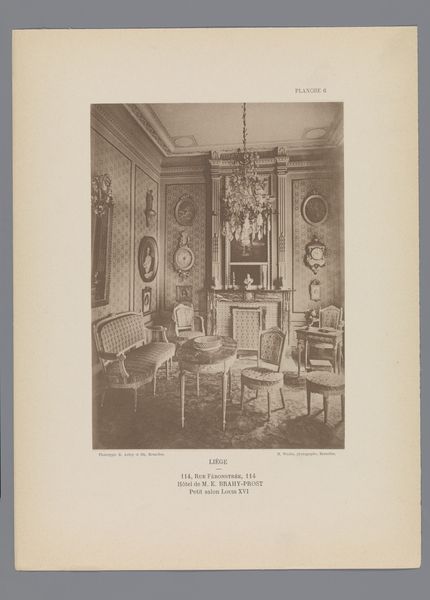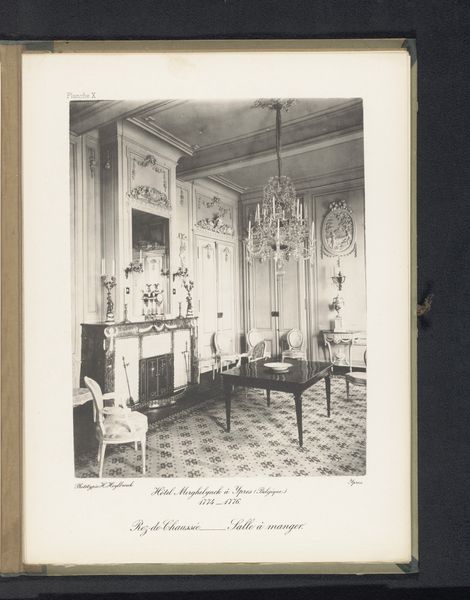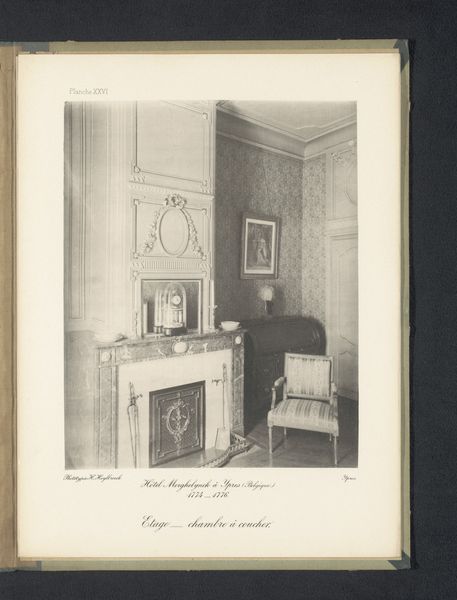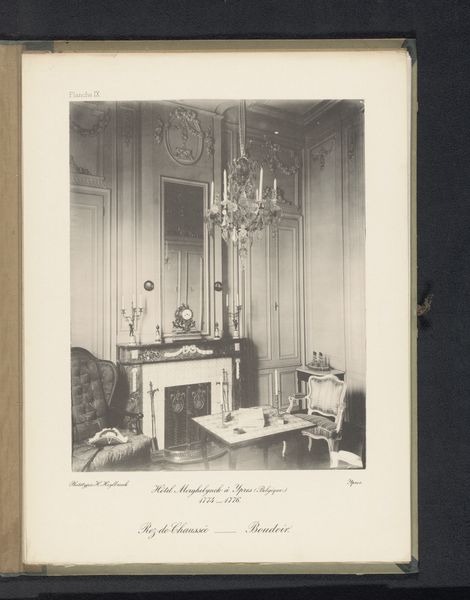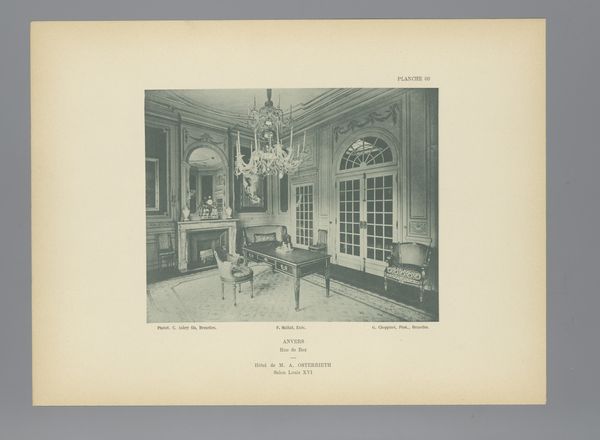
Eerste salon op de begane grond van Hotel Merghelynck in Ieper, België before 1894
0:00
0:00
drawing, etching, paper, architecture
#
drawing
#
etching
#
paper
#
architecture
#
realism
Dimensions: height 267 mm, width 205 mm
Copyright: Rijks Museum: Open Domain
Curator: Today, we’re examining an etching from before 1894 by Hector Heylbroeck, titled “Eerste salon op de begane grond van Hotel Merghelynck in Ieper, België,” or "First salon on the ground floor of Hotel Merghelynck in Ypres, Belgium.” Editor: The overwhelming impression I get is of fragile opulence, a sort of faded glory rendered in very precise detail. The symmetry feels both comforting and a little rigid. Curator: Indeed. The architectural rendering is quite exact. The lines of the paneling and furniture exhibit the visual rhetoric of Realism. The drawing meticulously captures the ornamentation and the play of light across surfaces, though the material is "merely" paper. Editor: The garlands of flowers cascading down the walls strike me as significant. They speak to cycles of life and decay, perhaps alluding to the transient nature of the wealthy occupants who would have used this space. Flowers and gardens were central symbols of regeneration and hope, yet so fleeting, in pre-industrial culture. Curator: Semiotically speaking, you could read the garlands as decorative elements reinforcing the social standing of the inhabitants through association with nature's abundance, a carefully constructed facade if you will. Editor: A facade perhaps built on inherited wealth? I wonder if there are hidden messages embedded within the visual program of the interior: certain flowers referencing familial heraldry, architectural cues nodding towards specific ancestral narratives. This level of decoration also suggests something of the personalities that had the space designed this way, no? Curator: The balanced composition, particularly the mirroring of floral arrangements and wall decorations, points towards a highly formalized societal structure where symbolic display reinforced social hierarchy. However, without additional context it’s difficult to speculate regarding narrative depth or overt symbolism, beyond displays of upper-class taste. Editor: Perhaps so, but I’m drawn to consider the echoes that remain. Despite the rigid form, I can almost feel the space buzzing with the unseen interactions of the people it housed, the ghosts of human events. I can't help but wonder who enjoyed it, and who suffered there as well. Curator: An understandable perspective. For me, I value that Heylbroeck captured this constructed domesticity with formal accuracy that offers us invaluable insights into how that society wanted to project itself.
Comments
No comments
Be the first to comment and join the conversation on the ultimate creative platform.
